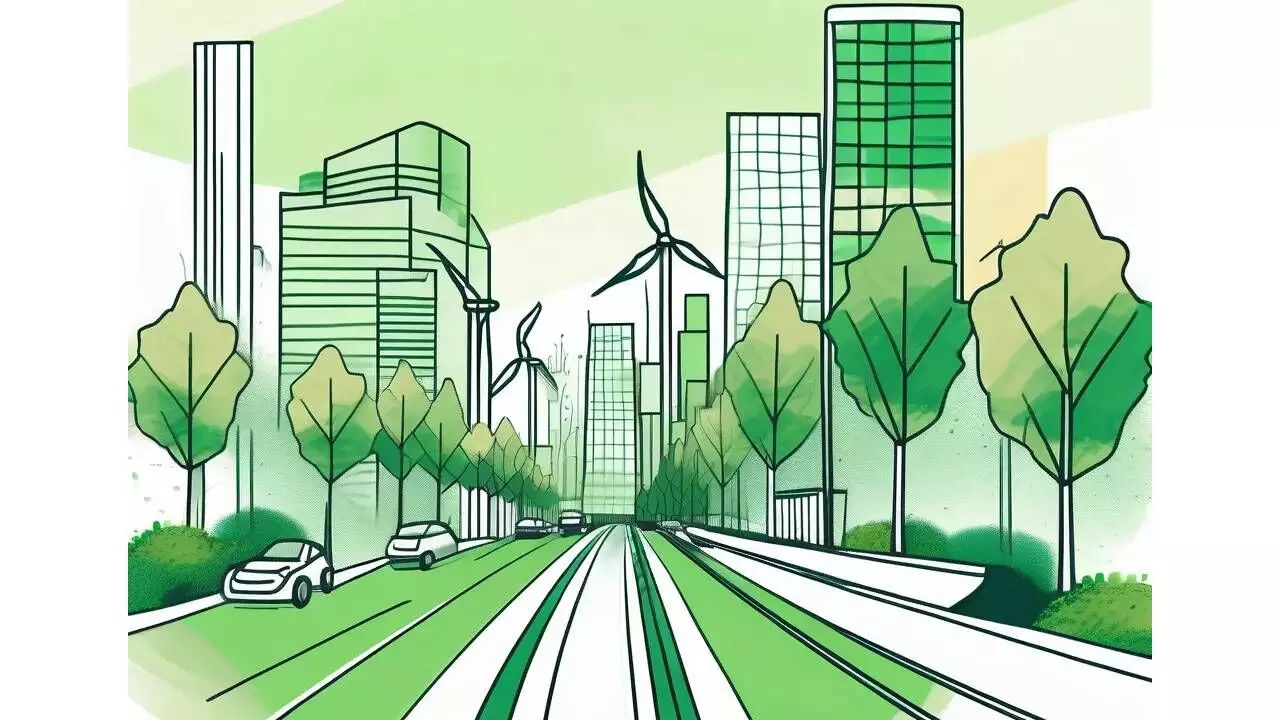Urbanisation key to sustainable growth if aligned with green policies
There is a growing apprehension that a renewed thrust toward urbanisation can be an elixir for Net Zero commitment & Sustainable Development Goals / SDGs
image for illustrative purpose

There is a growing apprehension that a renewed thrust toward urbanisation can be an elixir for Net Zero commitment & Sustainable Development Goals / SDGs. This is an apprehension that needs to be addressed immediately. Mind you India is urbanising rapidly. According to Census 2011, India's urban population was 31.1 per cent of the total population, which is expected to increase to 35-37 per cent in census 2024.
If a recent study by the SBI Research wing is to be believed, the relationship between urbanisation and forest cover is U-shaped. Early-stage urbanization leads to deforestation, but as urbanization progresses, there is an increase in policies such as urban greening, forest conservation programmes, and sustainable land-use planning, which results in an eventual recovery of forest cover. Beyond the 40 per cent urbanization rate, the effect on forest cover becomes positive. Thus, more and more programmes like Smart Cities Mission and AMRUT are essential to integrate green infrastructure and enhance urban ecological resilience.
In the earlier and medium stages of urbanisation as green cover declines, there is a potential tool of green finance to mitigate the environmental pressures on forests. Thus the launch of green bonds assumes crucial importance and long-term investments in green initiatives yield more substantial results over time, particularly if green bonds continue to scale up and are strategically aligned with conservation goals. And finally, the turning point at 40 per cent urbanization rate suggests a threshold beyond which the effect on forest cover becomes positive.
One has to keep in mind at this point that India is a land with asymmetric forest cover and increasing in states like Odisha, Mizoram, and Jharkhand. North-East and Hilly states like Uttarakhand, and Himachal Pradesh have more geographical area under forest cover. States like UP, Bihar, Rajasthan, Haryana, and Punjab, have less than 10 per cent of geographical area under forest cover. It is also pertinent to mention here that the maximum gain in forest cover (2023 over 2021) was seen in Ahmedabad followed by Bengaluru, while the maximum loss in forest cover was seen in Chennai and Hyderabad. The forestry sector contributes around 1.3-1.6 per cent to India's GVA, supporting industries like furniture, construction, and paper manufacturing. India is estimated to have 35 billion trees; this translates into only Rs 100 GVA per tree, according to the SBI Economic Research Wing study.
Expanding biodiversity hotspots, and incentivizing private sector participation can enhance forest sustainability, and intending to invest in afforestation projects through Corporate Social Responsibility (CSR) and carbon offset markets can enhance conservation funding. Strengthening enforcement against encroachment through satellite monitoring and digital databases can protect critical forest areas. The top 10 countries of the world accounted for 66 per cent of the total forest area of the world, with India standing at 10th place.
The share of the Indian population in urban agglomerations of more than 1 million has increased from 14.3 per cent in 2014 to 16.6 per cent in 2023.
All these facts taken together, there is no alternative to India accelerating urbanization while embedding sustainability at its core, ensuring that rapid growth is harmonized with ecological resilience to achieve long-term socio-economic stability.
Fortunately, the Indian government has undertaken various initiatives such as Smart Cities Mission and AMRUT to integrate green infrastructure and enhance urban ecological resilience in line with the postulated U-shaped hypothesis. This will give rise to better institutional capacity that supports both urban growth and environmental conservation. To accelerate India's green energy transition, support must be given to green hydrogen production, biofuels, renewable infrastructure, solar parks, wind farms, and biogas plants. These will accelerate significant private investments in renewable energy initiatives fostering climate resilient cities and at the same time position India as a global leader in low-carbon development.

